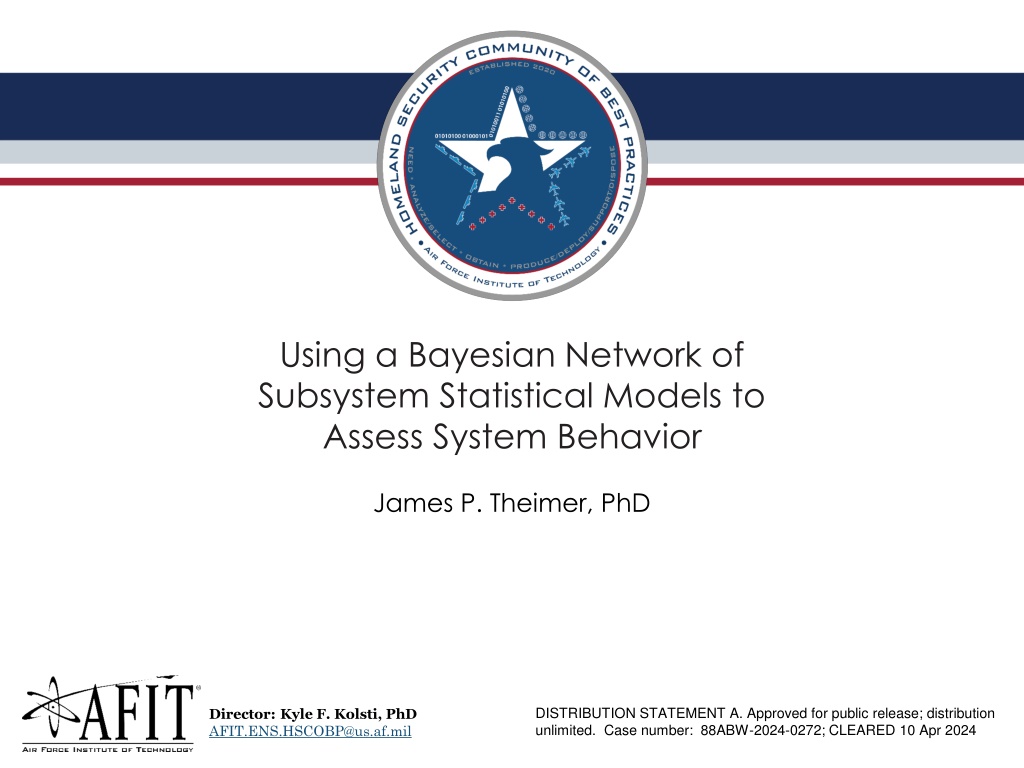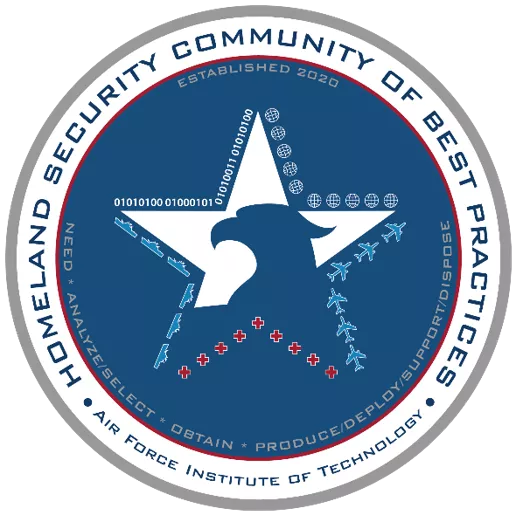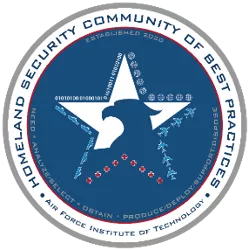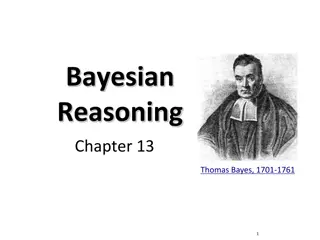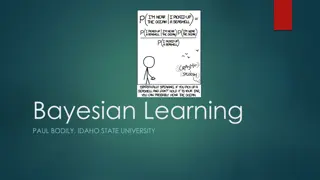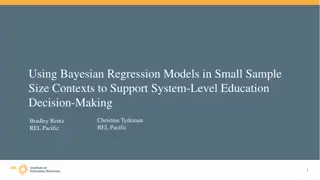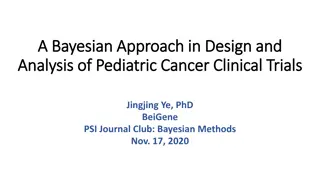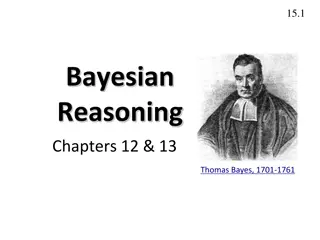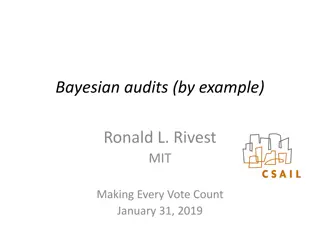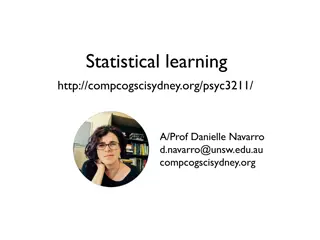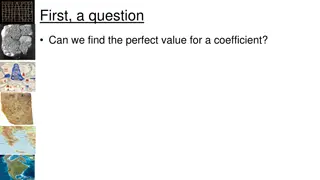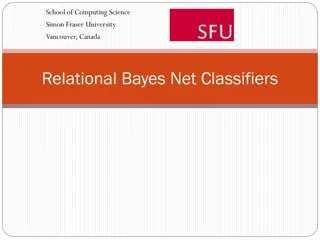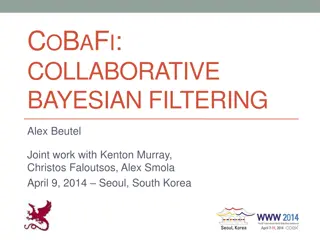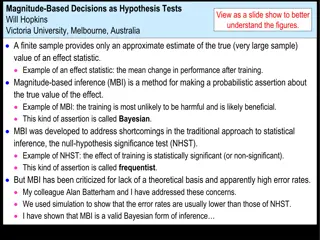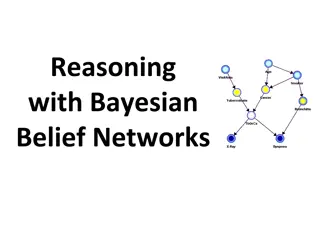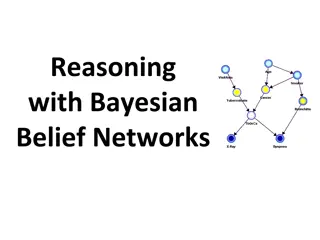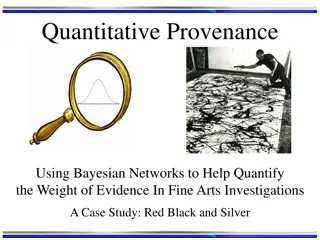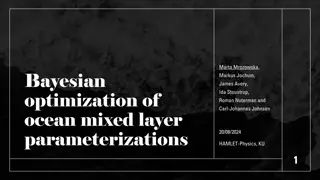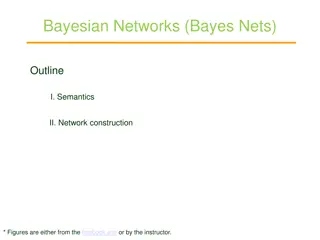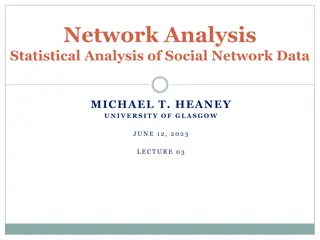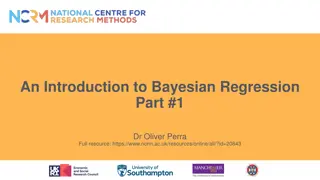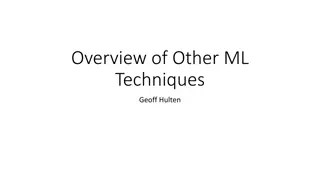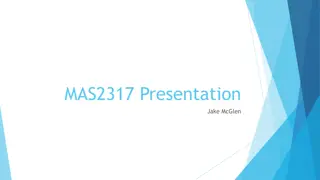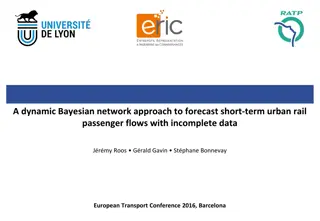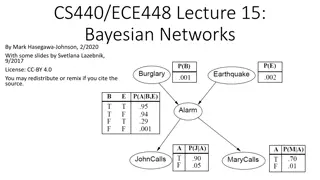Using Bayesian Networks to Assess System Behavior
Bayesian networks offer a solution for assessing system behavior when testing the total system is not feasible. By modeling subsystems and computing subjective probabilities, decision makers can trust their knowledge even when only parts of the system are tested. This approach provides a way to quantify the trust in knowledge and predict system outputs based on subsystem models.
Download Presentation

Please find below an Image/Link to download the presentation.
The content on the website is provided AS IS for your information and personal use only. It may not be sold, licensed, or shared on other websites without obtaining consent from the author.If you encounter any issues during the download, it is possible that the publisher has removed the file from their server.
You are allowed to download the files provided on this website for personal or commercial use, subject to the condition that they are used lawfully. All files are the property of their respective owners.
The content on the website is provided AS IS for your information and personal use only. It may not be sold, licensed, or shared on other websites without obtaining consent from the author.
E N D
Presentation Transcript
Using a Bayesian Network of Subsystem Statistical Models to Assess System Behavior James P. Theimer, PhD DISTRIBUTION STATEMENT A. Approved for public release; distribution unlimited. Case number: 88ABW-2024-0272; CLEARED 10 Apr 2024 Director: Kyle F. Kolsti, PhD AFIT.ENS.HSCOBP@us.af.mil
Problem Statement THEORY INTO PRACTICE There are situations where a total system cannot be tested, or only rarely tested We have been asked to investigate approaches that would allow decision makers to trust their knowledge of the behavior of the system when only subsystems can be tested Bayesian networks (BNs) compute the subjective probability of the output of a system based on a model of the subsystems Subjective probability, as determined by Bayesian methods, captures the degree of trust in knowledge 2
Subjective Probability THEORY INTO PRACTICE Subjective probability is how plausible it is that something is true, which is often the question programs wish to answer Area under the curve is the probability of success in a test with a binary outcome ? ? ?1 or ? ? ?0 are shaded areas Example is a beta distribution characterized by shape parameters a and b 3
What is a BN? THEORY INTO PRACTICE BN is a directed acyclic graph (DAG) with models of the nodes DAG describes model interactions through nodes and edges Directed edges indicate cause and effect Acyclic paths can t loop back on themselves Nodes can be described by the conditional probability of the outputs given the inputs 1 5 3 4 7 8 2 6 4
Notional System Explained THEORY INTO PRACTICE Reliability is the probability that the subsystem performs as it is intended (i.e. the node is working) OR nodes declare the system works if either previous node worked Previous nodes behave as two subsystems in parallel Node output data coded 1 for success and 0 for failure Order of 1s and 0s matters because of how OR nodes work Tests are assumed to be a set of n tests with y successes
Simple Model THEORY INTO PRACTICE OR OR 1 5 3 4 7 8 2 6 Reliability Node (e.g. node 1) If input is 1, output is Bernoulli process and the probability of success has a beta distribution Otherwise, output is zero OR Node (e.g. node 3) Output is 1 when at least one input (nodes 1 and 2) is 1 Simulated Results Produced many sets of size n with results coded as 1 or 0 New random draw of parameter was calculated for each set Output of each node is ? ? , where ? is the vector with values 0 to n This turned out to not be a DAG 6
Summation Model THEORY INTO PRACTICE ? ? ???? = ? ????? ? ? ?=0 ? ????? = 0 ? ????? ????????? ?,?,??? ? ??? The input to the network is always a success ? ? = 1 for input to nodes 1 and 2 ? ? = 0 ? ? for input to nodes 1 and 2 ? ? is the output of previous nodes for the input to other nodes youtis the number of success out of n trials in output yin is the number of success out of n trials in input ? > ??? 7
Summation Model of OR Nodes THEORY INTO PRACTICE Model shown above needed to change to make it a Bayesian network Output of the OR nodes depended on number of 1s in the input of the preceding node The method developed counted number of times both preceding nodes would produce a failure It was assumed the test had been a success prior to the preceding nodes Diagram on the right is the DAG for the model Nodes A and B are a composite shown in the lower figure 4 B 8 A y1 yout yin OR y2 8
Model of OR Node THEORY INTO PRACTICE y1 yout yin OR y2 ?1 ???? ? ?1 ?2 ???? ?2! ? ?2! ?! ? ????|?1,?2,??? = 0 ???? ??? 0 ?? ?????? ??? ?=0 ???? ????,= ? ?2,= ?,?1= ? ? ?2= ? ? ?1= ? ? ????= ?|???= ?=0 ? ?1 and ? ?2 computed as a reliability node Computation of all nodes treated as one unit, so it becomes one node in the Bayesian network 9
Results of Propagation THEORY INTO PRACTICE 3 4 1 2 6 7 5 8 Bayesian probability of outputs for each node are shown Approximate agreement between the methods Black lines are simulated, red lines are from summation models 10
Model Result THEORY INTO PRACTICE Model does not produce an estimate of , but of probability of seeing y successes out of n tests There was no expected model of the PDF of the output, but a beta- binomial fit the data very well Results are for simulated data 11
Analysis of Results THEORY INTO PRACTICE The beta-binomial model was fit to estimate parameters Beta-binomial is the predictive distribution for a beta prior distribution Beta distribution with those parameters was used to estimate probabilities Results for the beta distribution do not appear to depend on n Number of Observations ? ? 0.7 ? ? 0.8 Estimated a Estimated b 50 95.18162 18.14391 0.000236 0.125917 100 96.69142 18.38437 0.000206 0.12226 200 98.96376 18.89685 0.000187 0.123052 12
Decision Based on Result THEORY INTO PRACTICE Risk of low values of are estimated by the model Risk captures uncertainty reflected in the models of the nodes Results are from different random samples and vary Results conflate Is the model good enough? Is the system good enough? Number of Observations ? ? 0.7 ? ? 0.8 Estimated a Estimated b 50 95.18162 18.14391 0.000236 0.125917 100 96.69142 18.38437 0.000206 0.12226 200 98.96376 18.89685 0.000187 0.123052 13
Validation THEORY INTO PRACTICE Model can be run to get the CDF of number of successes out of n One can estimate the probability of seeing a given number of successes, or fewer If the number of observed successes is the value shown in the table, or below, one would say that the testing does not support the model Do the data support the model? ? ??? ? ?? ? ? 0.1 ? ??? ? ?? ? ? 0.2 n 50 37 38 100 76 79 200 156 160 14
What If You Can Only Run One Test? THEORY INTO PRACTICE The model will still produce estimates of system performance if we fit a beta-binomial to estimate parameters of the beta distribution Model validation comes down to the probability of seeing any failures There is 16% chance of seeing a failure If we see a failure, would we reject the model? Probability of success Probability of failure ? ? 0.7 ? ? 0.8 Estimated a Estimated b 95.24798 18.12366 0.000229 0.124447 0.84239 0.15761 15
What If You Cant Test the Total System? THEORY INTO PRACTICE The model produces ? ? for the total system The beta distribution can be fit to obtain ? ? Individual nodes can be tested and node models validated 16
What is Not Here? THEORY INTO PRACTICE Unknown unknowns, lurking variables, latent variables We are assuming that the DAG reasonably captures cause and effect relationships Possible fixes Look at how responses change with time and at different locations SMEs will have to be continuously asked for insight into new models 17
QUESTIONS? To enhance T&E science through multidisciplinary collaboration and deliver it to the DHS workforce through independent consultation and tailored resources. Visit, www.AFIT.edu/STAT Email, AFIT.ENS.HSCOBP@us.af.mil THEORY into PRACTICE THEORY into PRACTICE 18
